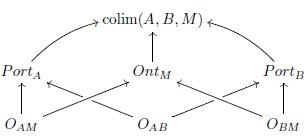Foundations of Semantic Interoperability and Integration
Foundations of Semantic Interoperability and Integration
Overview

Industry Need Addressed
The creation of IndustryNet to connect supply chains and the advent of cyber-physical systems to manage everything from traffic to healthcare point to a need at the forefront of the current industrial expansion: systems which are easily composed and networked. The integration of such systems has traditionally relied on data exchanges and format exchanges, but these are not sufficient to deal with their complexity. There is a critical need for semantically rich representations that tie together the different semantic and ad hoc formalisms currently in use and under design. These needs pervade both the commercial and defense sectors of US industry. Without a strong, common foundation for modeling and integrating these systems, the cost of sustaining and designing these systems will become prohibitive and prone to potential failure.
NIST Approach
NIST/ITL is studying novel mathematical techniques to address the problems of information modeling, aggregation and transfer. Category theory (CT) is a branch of mathematics which studies processes in a very general sense, and it provides a powerful and flexible approach to mathematical modeling. CT is a graphical formalism, well-suited to complement existing workflows using tools like UML/SysML. CT has powerful mathematical techniques which begin to address the problems of integration and interoperability, providing, for example, a formal definition and provably correct results for data migration between domain models, data aggregation and model integration. These categorical models also have very rich semantics, allowing us to construct non-deterministic and stochastic processes as easily as deterministic ones. We are currently working on applications of CT in scientific reproducibility, additive manufacturing, medical device interoperability and cyber-physical system design and specification.
Impact
The ability to design and build networks of systems and people offers the unique ability to address many national priorities in ways no single disciplinary approach can solve. This is critical to the success of these future networked and composable systems.Novel approaches have the potential to fundamentally change the design and operation of systems across aerospace, defense, manufacturing, healthcare, and many other industries.

